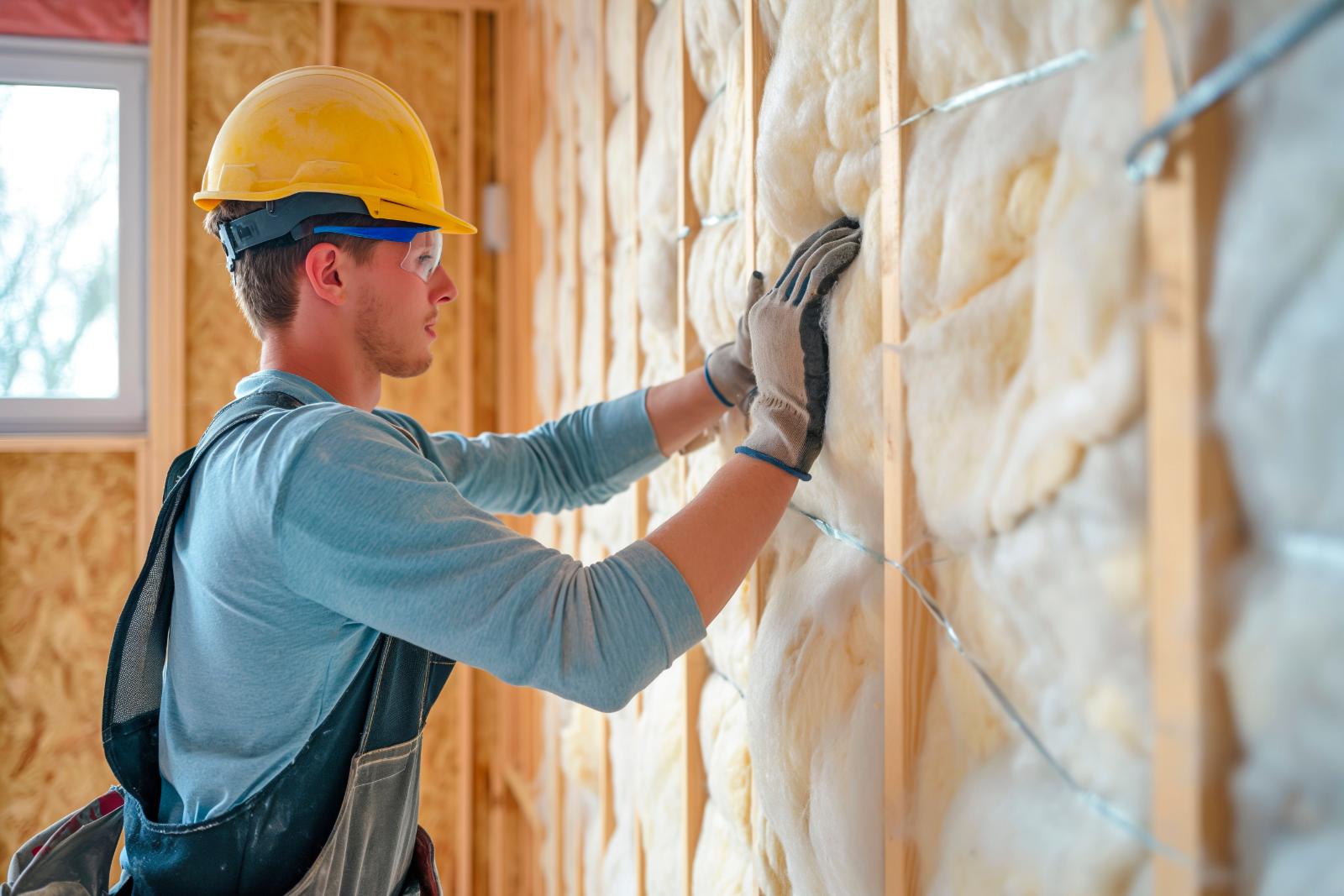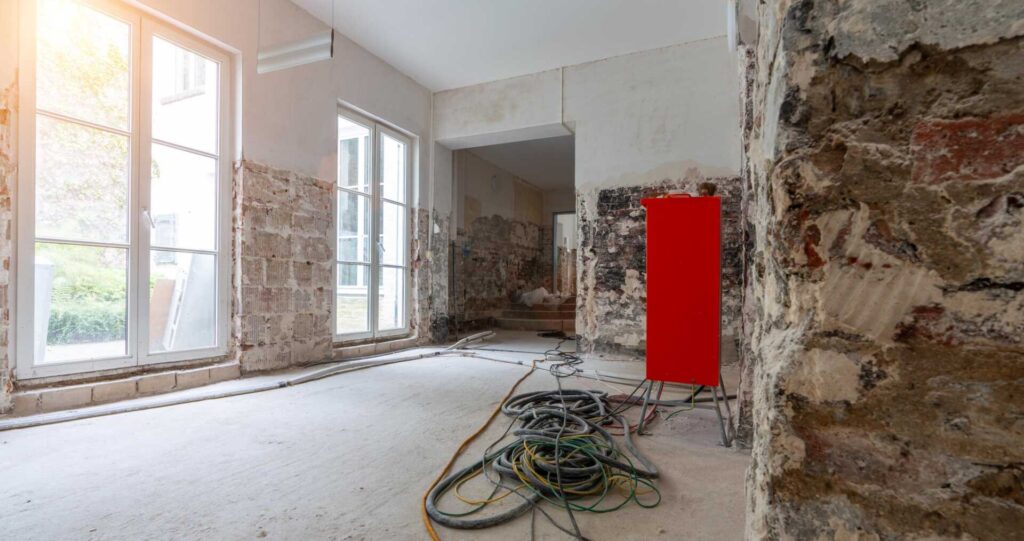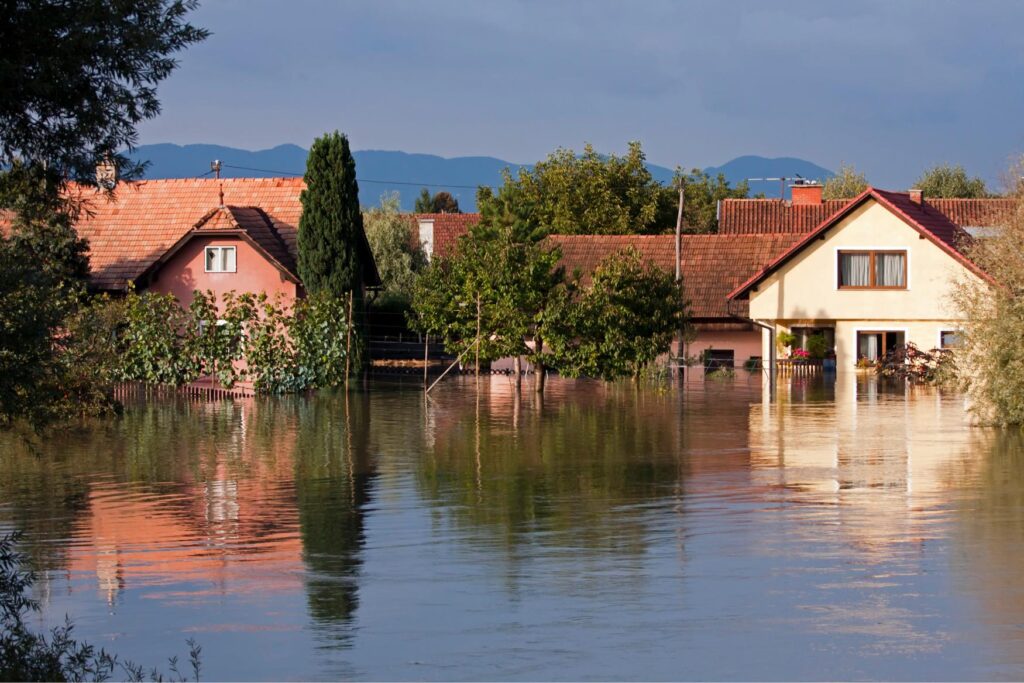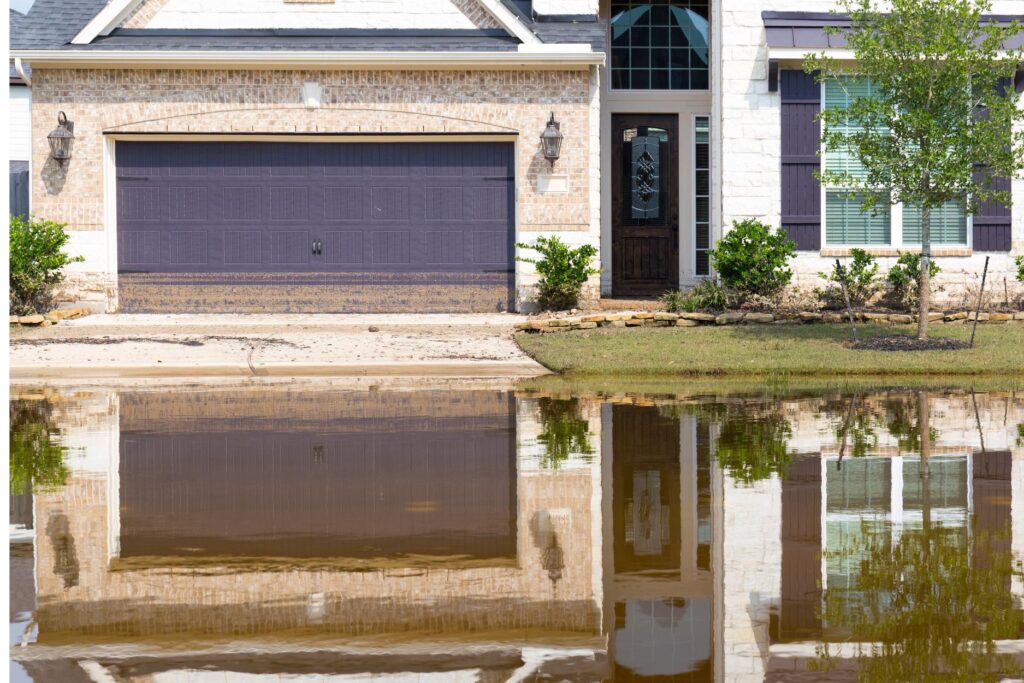Contents
You’re tackling a drywall mudding project, aiming for a flawless finish. But do you know the seven essential steps to make or break your outcome? From meticulously preparing the surface to mastering the art of sanding between coats, each step plays an important role in achieving your desired smooth, professional look. So, before starting your project, ensure you have a solid grasp of these critical steps that can elevate your drywall mudding game to the next level.
Key Takeaways
- Thoroughly inspect and prepare drywall surfaces for imperfections and damage.
- Achieve proper consistency when mixing joint compound.
- Apply mud evenly and feather edges for a seamless blend.
- Sand each layer with fine-grit sandpaper for a smooth finish.
- Inspect, touch up imperfections, and prime before painting for flawless results.
Preparing the Drywall Surface
Before mudding drywall, thoroughly inspect the surface for any imperfections or damage that need to be addressed prior to application. Proper surface preparation is vital for a successful drywall mudding project. Begin by checking for dents, bumps, or cracks that may affect the final finish. Use a putty knife to fill in any gaps with joint compound and allow it to dry completely before sanding. Sanding techniques play an important role in achieving a smooth surface. Use fine-grit sandpaper to feather out rough edges and blend the patched areas seamlessly into the surrounding drywall.
Once all imperfections are addressed, it’s time to prime the drywall before mudding. Priming helps the joint compound adhere better to the surface and creates a uniform base for the mud application. Choose a high-quality primer suitable for drywall and apply it evenly using a paint roller or brush. Allow the primer to dry completely according to the manufacturer’s instructions before proceeding with mudding.
You’re ready to begin mudding when the surface is fully prepped and primed. Remember, the key to a professional finish lies in the attention to detail during the preparation stage. Take your time with the finishing touches to ensure a flawless result once the mudding process is complete.
Mixing the Joint Compound
When mixing joint compound, achieving the proper consistency is crucial to a successful mudding job. You’ll need essential tools like a mixing paddle and a large mud pan to guarantee a smooth blend.
Employing effective mixing techniques will help you achieve a flawless finish on your drywall.
Proper Consistency for Mixing
Achieving the proper consistency when mixing joint compounds is crucial for a smooth and successful drywall mudding project. To make sure you get it right each time, follow these key tips:
- Consistency Tips:
The ideal consistency for joint compoundsis similar to that of thick pancake batter. It should be smooth and free of lumps, making it easy to spread on the drywall without dripping excessively.
Mixing Ratios:
When mixing the joint compound with water, start with a 4:1 ratio, meaning four parts joint compound to one part water. Adjust the ratio slightly based on the specific requirements of your project, but remember, it’s easier to add more water than to correct by adding more joint compounds.Texture Check:
After mixing, run your finger through the compound. It should leave a slight indentation without collapsing. If it’s too thick, add a small amount of water and mix again until you reach the desired texture.
Tools Needed for Mixing
To effectively mix joint compounds for your drywall mudding project, make sure you have the necessary tools ready for the task at hand. Proper tools are crucial for achieving a smooth and consistent mixture. You’ll need a mixing paddle attachment for a drill, a clean bucket, and a measuring cup for water. These tools will help you achieve the right consistency without lumps or air bubbles.
Common mistakes when mixing joint compounds include adding too much water too quickly, which can make the mixture too thin, or not mixing thoroughly, leading to clumps in the compound. To prevent these issues, measure your water carefully and mix the compound until it’s smooth and uniform.
If you encounter any troubleshooting issues while mixing, such as the mixture being too thick or too thin, adjust the water or compound accordingly until you reach the desired consistency. By using the proper tools and following the correct mixing techniques, you can ensure a successful drywall mudding project.
Mixing Techniques for Smooth Finish
For a smooth finish in your drywall mudding project, make sure that the joint compound is mixed thoroughly and consistently. Here are some mixing techniques to help you achieve that perfect application:
Mixing Tips: Start by pouring the joint compound into a clean bucket. Use a mixing paddle attachment on a drill for efficient and thorough mixing. Add a small amount of water gradually while mixing until you reach a smooth, creamy consistency. Avoid adding too much water at once, as it can lead to a runny mixture that’s challenging to work with.
Consistency Tricks: Aim for a consistency similar to that of mayonnaise – not too thick or too thin. This in-between consistency ensures easy application and ideal adhesion to the drywall surface.
Perfect Application: Once mixed, let the compound sit for a few minutes to allow any air bubbles to escape. Stir the mixture again briefly before using it. Apply the compound evenly and feather the edges for a flawless finish that blends well with the rest of the wall.
Applying the First Coat
Preparing the surface before applying the first coat of joint compound is essential for a smooth finish. Make sure the drywall is clean and free of dust or debris to promote proper adhesion.
When applying the mud, remember to work evenly and methodically, smoothing out any imperfections as you go for a professional result.
Prep the Surface
Prepare the surface by making sure it’s clean and free of any debris before applying the first coat of drywall mud. Proper preparation sets the foundation for a smooth and professional finish.
Surface Cleaning and Sanding:
Begin by thoroughly cleaning the surface to remove dust, dirt, and any loose particles. Sand down any rough spots or uneven areas to create a smooth base for the drywall mud to adhere to effectively.
Priming:
After cleaning and sanding, it’s important to prime the surface before mudding. Primer helps the drywall mud adhere better, prevents bubbles, and promotes an even finish. Allow the primer to dry completely before moving on to the next step.
Taping:
Before applying the first coat of drywall mud, make sure all seams and joints are properly taped. Use drywall tape to reinforce these areas, preventing cracks and ensuring a seamless look once the mudding is complete. Proper taping is essential for a durable and professional outcome.
Apply Mud Evenly
To ensure a successful first coat of drywall mud, focus on applying it evenly across the prepared surface using smooth and consistent strokes. Start by loading your drywall knife with an ample amount of mud, then begin spreading it onto the surface in a thin layer.
Use a mud application technique that ensures even distribution, working from one end to the other in a controlled manner. As you apply the mud, pay close attention to feathering the edges to blend the compound with the surrounding area seamlessly. This feathering technique is essential for achieving a smooth connection between the mudded area and the bare drywall.
Keep the pressure on your knife consistent to avoid creating uneven patches. Remember, the key to a flawless first coat lies in the precision of your mud application and smoothing technique. By mastering this step, you set the foundation for a professional-looking finish on your drywall project.
Smooth Out Imperfections
Smooth out any imperfections in the drywall by focusing on applying the first coat of mud evenly and with precision. This step is vital in achieving a flawless finish for your drywall project.
Here are three essential techniques to help you achieve a smooth surface:
Sanding Techniques: After applying the first coat of mud, allow it to dry completely. Use a fine-grit sandpaper to gently sand the surface, removing any bumps or ridges. Sand in a circular motion to blend the edges seamlessly and create a uniform texture.
Filling Gaps: Inspect the drywall carefully for any gaps or holes. Use additional mud to fill in these imperfections, ensuring a harmonious surface. Smooth the mud over the gaps with a putty knife, feathering the edges to blend it with the surrounding area.
Blending Colors: When applying the first coat of mud, pay attention to achieving consistency in color and texture. This will help in creating a cohesive finish once the paint is applied. Make sure that the mud is evenly spread and blended to avoid any noticeable variations in color.
Sanding Between Coats
When applying multiple coats of drywall mud, it’s important to make sure that each layer is sanded thoroughly before proceeding to the next application. Sanding between coats is a vital step in achieving a smooth and professional finish on your drywall surfaces. To guarantee consistency and a flawless end result, mastering proper sanding techniques and paying attention to finishing touches is key.
Begin by allowing each layer of drywall mud to dry completely before sanding. Use fine-grit sandpaper, around 120 to 150 grit, and a sanding block to gently sand the dried mud. Work in a circular motion, applying even pressure to avoid creating uneven patches. Focus on smoothing out any ridges, bumps, or imperfections in the mud. Wipe down the sanded area with a damp cloth to remove dust and debris before applying the next coat.
Maintaining consistency throughout the sanding process is essential. Take your time to make sure that each layer is sanded down uniformly, paying special attention to corners and edges.
Applying Additional Coats
Make sure that each additional coat of drywall mud is applied smoothly and evenly to build up the desired thickness and create a smooth finish on your drywall surfaces. Consistency in application is crucial to achieving professional results.
Here are some essential tips to help you apply additional coats effectively:
Drying Time: Allow each coat of drywall mud to dry completely before applying the next one. This ensures proper adhesion and prevents cracking or shrinking as the mud dries. Typically, drying times can vary based on humidity levels and the type of mud used. Follow the manufacturer’s recommendations for the most accurate drying times.
Thickness Control: Maintain control over the thickness of each coat of drywall mud. Too thin of a coat may not provide adequate coverage, while a too-thick coat can lead to cracking and longer drying times. Aim for a consistent thickness throughout the application process to achieve a smooth finish. Use a trowel or knife to spread the mud evenly and adjust the thickness as needed.
Even Application: Apply the additional coats of drywall mud in a crisscross pattern to ensure uniform coverage. This technique helps to distribute the mud evenly and avoid buildup in one area. Smooth out any ridges or bumps as you work to create a flat surface ready for the next step in the mudding process.
Sanding the Final Coat
Achieve a flawless finish by carefully sanding the final coat of drywall mud to smooth out any imperfections and prepare the surface for painting or finishing touches. When sanding the final coat, it’s important to use the right sanding techniques to achieve a professional and smooth final finish.
Begin by using a fine-grit sandpaper, around 220 grit, to sand the drywall mud gently. Work in a circular motion to blend the edges and create a unified surface.
In the sanding process, pay close attention to areas where excess mud may have accumulated, such as corners and seams. Use a sanding block or sanding sponge to maintain a level surface while sanding. Remember to feather the edges to avoid visible lines between the mud and the drywall.
To ensure dust control during the sanding process, consider using a vacuum sander or a sanding pole with a dust collection system. This will help minimize the amount of dust in the air and keep your workspace clean.
After sanding, wipe down the walls with a damp cloth to remove any remaining dust particles.
Finishing Touches and Cleanup
For a polished final result, focus on implementing meticulous finishing touches and conducting a thorough cleanup after sanding the final coat of drywall mud.
To achieve a professional finish, follow these essential steps for finishing touches and cleanup:
Inspect and Touch Up: After sanding, carefully inspect the drywall surface for any imperfections such as bumps, ridges, or bubbles. Use a small putty knife to carefully touch up any areas that need additional mudding. Smooth out these spots with a fine-grit sanding sponge once the mud is dry to blend them seamlessly with the rest of the wall.
Prime Before Painting: Before painting your drywall, it’s important to apply a coat of primer. This step helps the paint adhere better to the surface, ensures even color distribution, and enhances the durability of the paint job. Choose a high-quality primer suitable for drywall surfaces for the best results.
Thorough Cleanup: Cleaning up after mudding and sanding is essential to maintain a tidy workspace and ensure a flawless finish. Start by vacuuming the area to remove dust and debris. Wipe down the walls with a damp cloth to eliminate any remaining particles. Pay attention to corners and edges to ensure a clean surface for painting or wallpapering.
Review
As you commence the journey of drywall mudding, remember that each step is like a brushstroke on a canvas, slowly creating a masterpiece.
Just as an artist carefully crafts each detail, take the time to prepare, mix, apply, sand, and finish for a flawless result.
By following these essential steps with patience and precision, you’ll achieve a smooth and professional finish that will leave your walls looking like a work of art.




